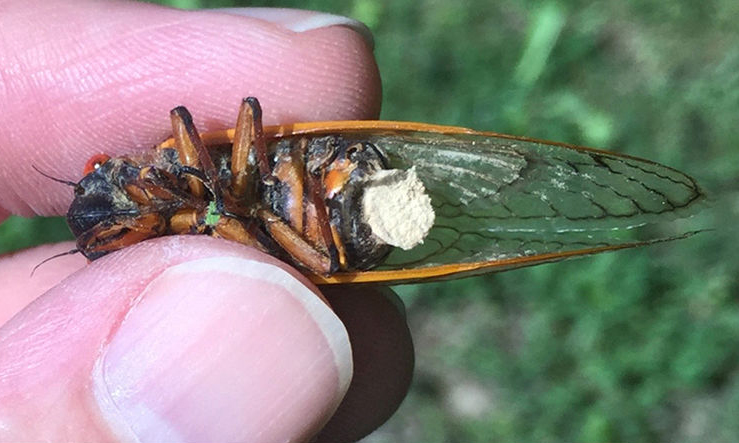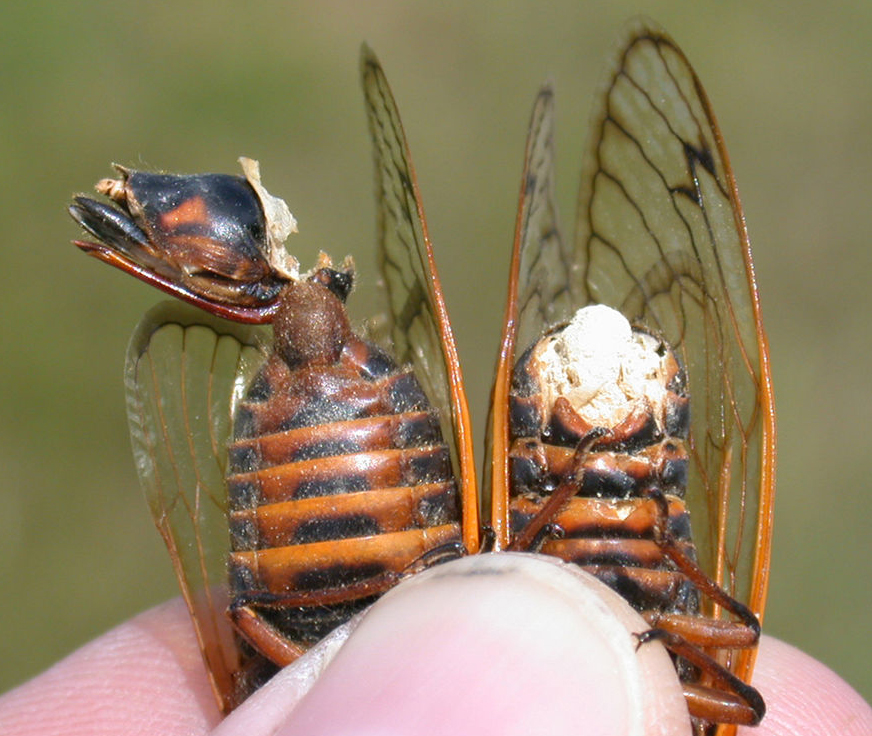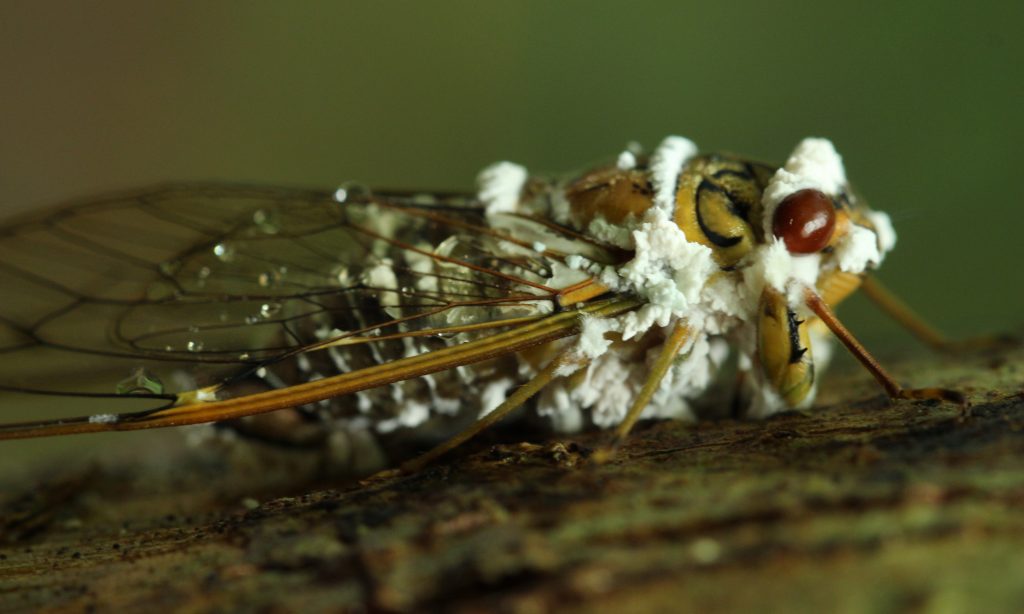.

When cicada nymphs emerge from the ground, a certain percentage of them—between 2 and 5 percent—will acquire a fungal infection. The parasite rapidly grows inside these unlucky insects, eventually destroying whole sections of their body.
But while the fungus has been known to science for a century, recent research published in the journal Nature Scientific Reports reveals how the parasite manipulates the mating behavior of male cicadas, all to aid in its unconscious quest to infect and multiply.
The fungal parasite—Massospora cicadina—starts out its life cycle as spores resting in stasis in the soil. North American periodical cicadas (Magicicada) spend 13 or 17 years underground before emerging to metamorphose into adults, mate, and reproduce. When they do so, a fraction of them become infected with the fungal parasite. These cicadas molt into adults just like any other, but eventually, the fungal growth inside their bodies causes the end of their abdomen to swell and rupture, uncovering a mass of white, dusty, infectious spores.
Incredibly, this doesn’t kill them. Not yet.
While the cicadas walk and fly around, they spread countless spores in the cicada-rich environment, each one able to parasitize another member of the brood. Though their fungus-saturated innards are exposed and their genitals are obliterated by the infection, the mutilated insects still insist on finding mates. The deathly ill cicadas stubbornly flirt as if nothing is wrong, enthusiastically performing courtship displays even as they quite literally fall apart.

It’s apparently not even wasted effort. Either other cicadas aren’t turned off by the shambling fungus-zombies, or they don’t notice, but it’s not uncommon to find healthy cicadas with their genitals stuck in the powdery fungal mass of a terminally infected individual. Every intimate encounter just allows the fungus to spread.
It’s this dogged persistence in mating that Massospora has evolved to exploit, scientists have recently discovered. New findings suggest that it’s not just that the fungus doesn’t interfere with cicada courtship, it actually hijacks the whole process and prods it along.
Researchers at the University of Connecticut have identified a strange behavioral quirk in male cicadas in the early stages of a Massospora infection. Normally, females cicadas will give a very specific type of wing-flicking motion towards courting males to show that they’re receptive. Using a combination of field observations and song playback experiments in the lab, the research team found that early-stage infected males also give these wing-flicks towards healthy males, in addition to their normal repertoire of female-oriented flirtations.
The signal is convincing enough to lure healthy males closer, even persuading them to attempt mating with the diseased male. The fungal parasite therefore turns male cicadas into zombified puppets, making them mimic female sexual signals in an insidious strategy to expose the maximum number of broodmates to the deadly spores.
Targeting males is a particularly useful strategy to the fungus in spreading spores since male cicadas will mate many times, while females typically don’t remate after successful fertilization of their eggs. This sophisticated commandeering of cicada sexual rituals allows the fungus to rapidly and covertly promulgate among the insects right at the start of the brief mating season.

The discovery adds Massospora to a long list of mind-controlling parasites that modify their host’s behavior for their own ends. An infamous example is the Ophicordyceps fungus, which compels the bodies of heavily infected insects to ascend to conspicuous heights on plants to facilitate the dispersal of spores once the fungus erupts out of the poor creature’s corpse. Others include flukes that grow in fish brains, making them swim near the surface where they are more likely to be eaten by birds (the fluke’s next host), or horsehair worms that make crickets drown themselves so they can escape their host and reproduce in the water.
But the parasite that is closest to Massospora in M.O. is a type of parasitic barnacle, Sacculina. When female Sacculina embed themselves in male crabs, they screw with the crab’s hormonal balance, sterilizing it and morphing its body plan to resemble that of a female crab’s. This also makes the male crab act like a female crab, which includes grooming and caring for the “eggs” underneath its abdomen, which are actually the eggs of scores of Sacculina barnacles.
Massospora’s bizarre effects on male cicadas are yet another natural history note on the fascinating (if dark) creativity of parasites in getting their hosts to do the heavy lifting in their own reproduction